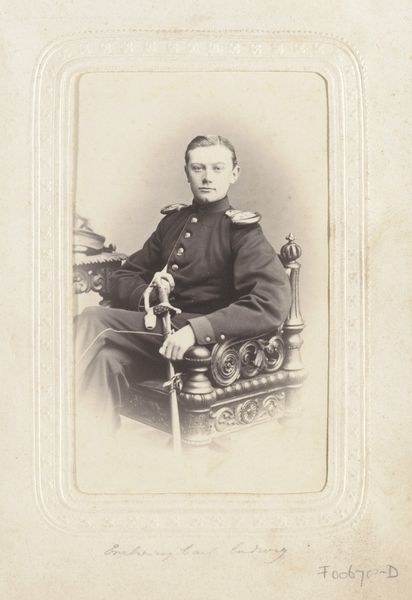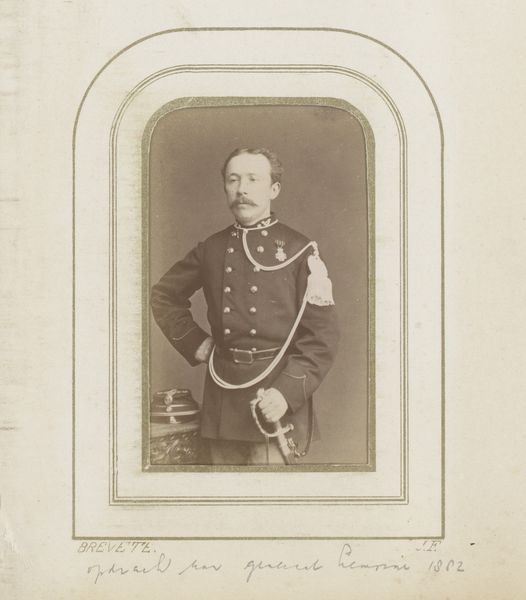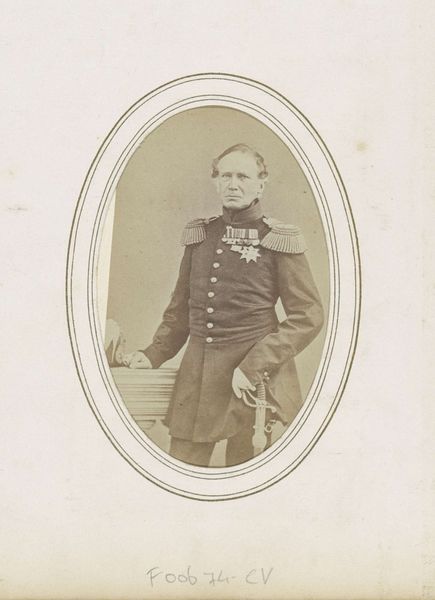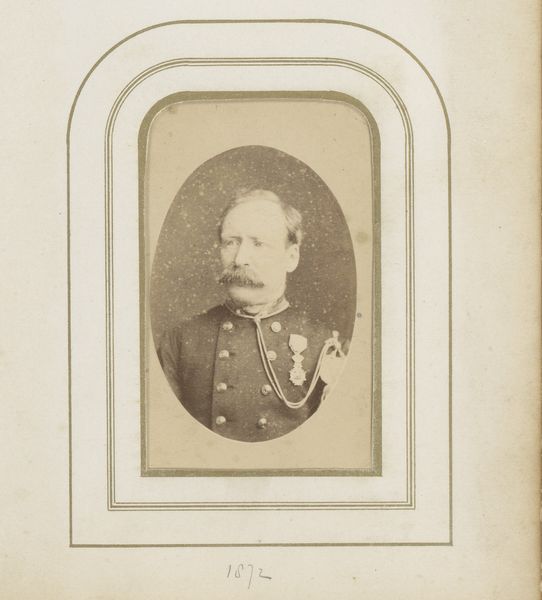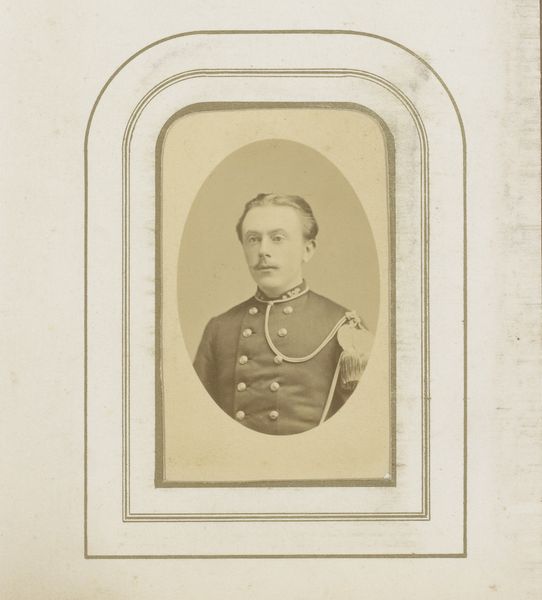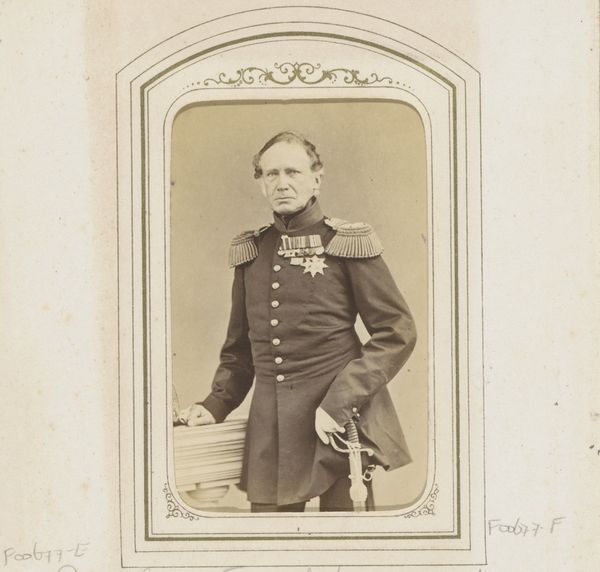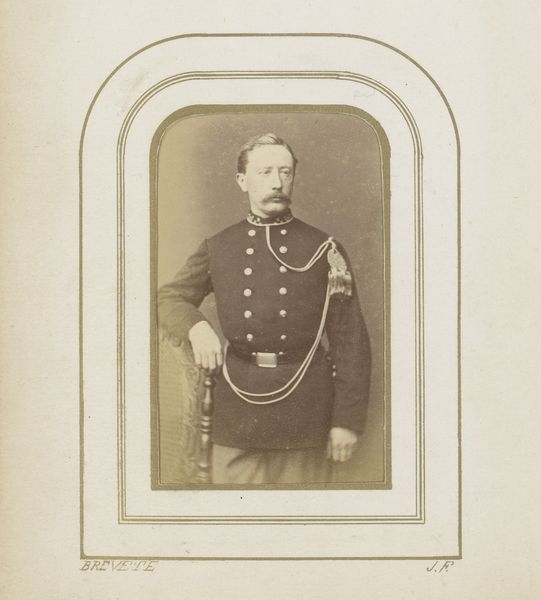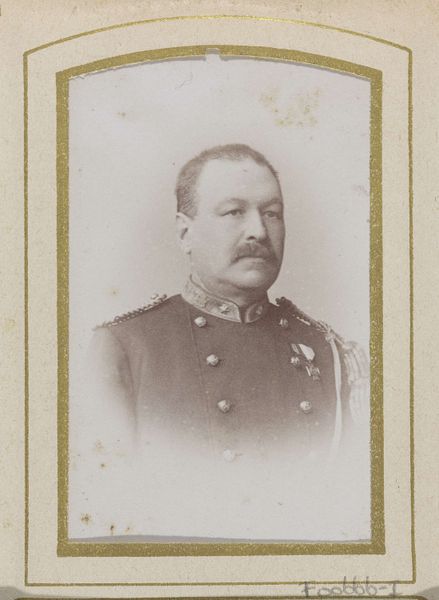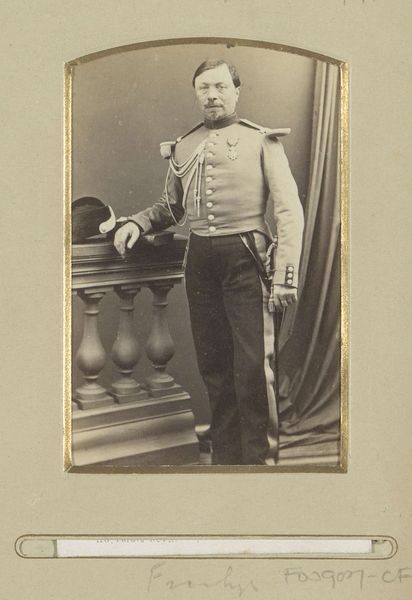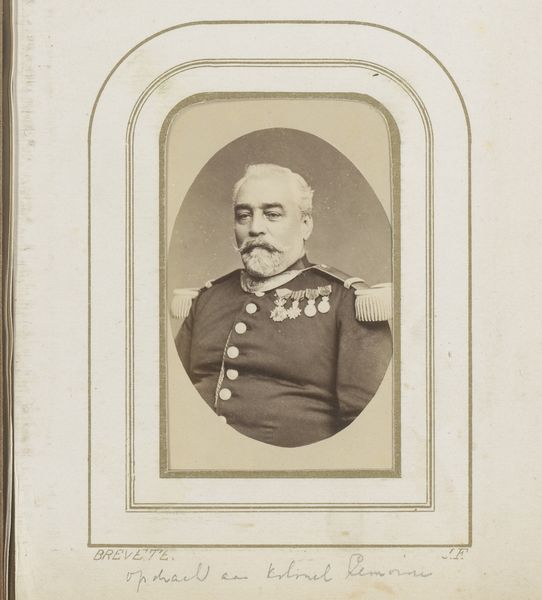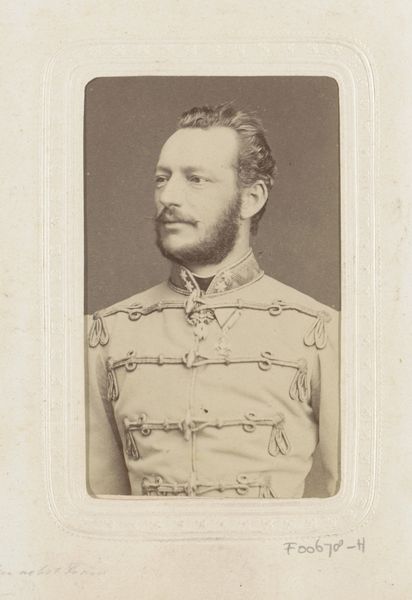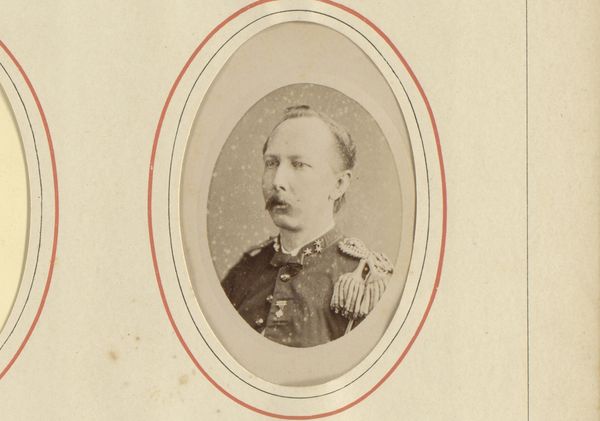
photography, albumen-print
#
portrait
#
still-life-photography
#
16_19th-century
#
archive photography
#
photography
#
historical photography
#
19th century
#
history-painting
#
academic-art
#
albumen-print
#
realism
Dimensions: height 87 mm, width 53 mm
Copyright: Rijks Museum: Open Domain
Josef Borsos made this photograph of Leopold of Bavaria, using the wet collodion process, sometime in the mid-19th century. What was the public role of such an image at this time? This was the era of the European nation-state and photography was often put in the service of nation-building. Here, we see Leopold in military dress, his chest bedecked with medals. Photography became a tool of power, used by the Bavarian monarchy to assert its authority. The portrait was a way of presenting Leopold as a strong, capable leader, someone worthy of respect and loyalty. This image operates as a visual code, using recognizable symbols of power and status to create a certain impression on the viewer. Understanding such an image better means looking into the institutional history of photography and considering who had access to it, and for what purposes. It also requires an understanding of the social history of the Bavarian monarchy and the role it played in shaping Bavarian society.
Comments
No comments
Be the first to comment and join the conversation on the ultimate creative platform.
